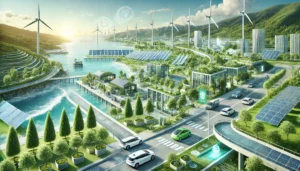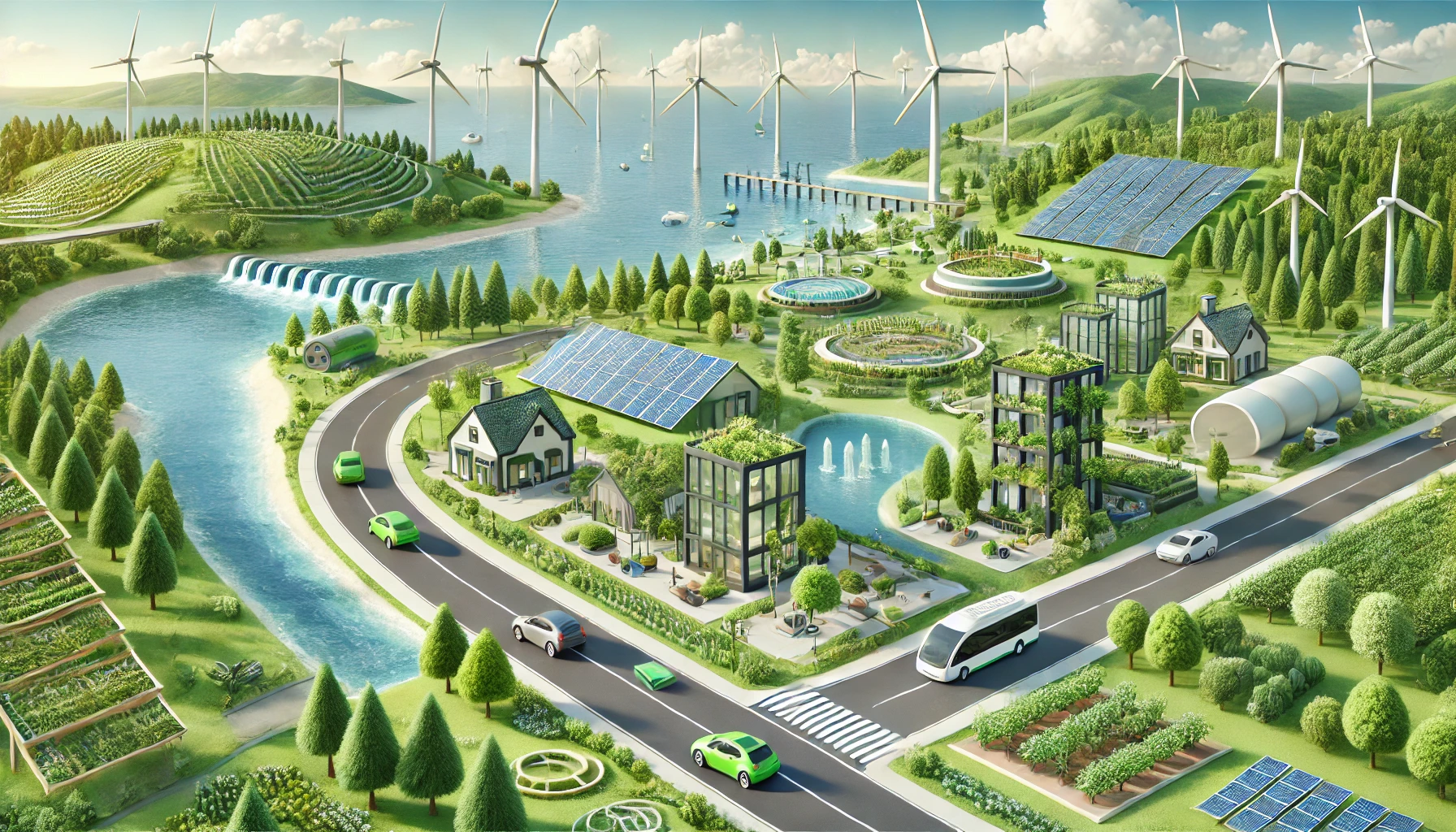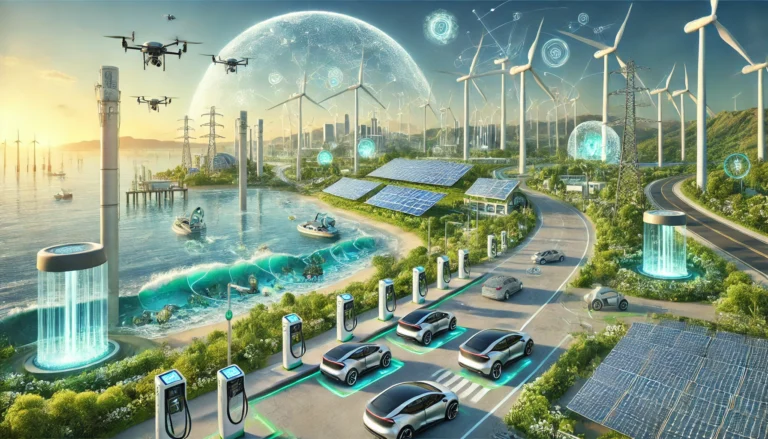Exploring Green Tech Solutions for a Cleaner Planet
As concerns about climate change and environmental degradation grow, the demand for sustainable, eco-friendly solutions has never been higher. Enter green technology, a game-changer in the fight for a cleaner, healthier planet. But what exactly is green tech, and how does it benefit our world? Let’s dive into the exciting realm of green technology, uncovering innovations that are making a tangible difference.
What is Green Technology?
Green technology, often referred to as clean tech, focuses on reducing environmental impact while promoting sustainability. This type of technology aims to harness renewable resources, minimize waste, and reduce the carbon footprint of human activities. From solar panels to electric vehicles (EVs), green tech is broad, covering everything from energy production to waste management.
Why is Green Technology Important?
With rising global temperatures, deforestation, and ocean pollution, the planet is facing a critical tipping point. Green tech is vital because it offers innovative solutions that help us reduce our environmental impact, conserve resources, and create a more sustainable future. It’s not just about solving today’s problems but also ensuring that future generations inherit a livable planet.
Types of Green Technology

There’s no one-size-fits-all when it comes to green tech. It spans various industries and sectors, each with its own unique innovations designed to help combat environmental challenges. Here are some key categories:
1. Renewable Energy Solutions
One of the most well-known aspects of green tech is renewable energy. This includes solar power, wind energy, hydroelectricity, and geothermal energy. These sources are crucial because they generate electricity without depleting natural resources or emitting harmful pollutants.
Solar Power
Solar panels have become a staple in green energy solutions. By harnessing the power of the sun, solar energy systems generate electricity that powers homes, businesses, and even cities. Plus, with advancements in solar storage, it’s becoming a more reliable energy source even when the sun isn’t shining.
Wind Energy
Wind turbines convert the kinetic energy from the wind into electricity. Countries like Denmark and Germany have been leading the charge, with wind farms supplying a significant portion of their electricity. As wind tech improves, it’s becoming an increasingly cost-effective and scalable solution.
2. Electric Vehicles (EVs)
Gasoline-powered vehicles are one of the largest sources of carbon emissions. Enter electric vehicles (EVs), a green tech solution that’s transforming transportation. EVs run on electricity, reducing or eliminating tailpipe emissions. With companies like Tesla, Nissan, and traditional automakers now heavily investing in EV technology, it’s clear that the future of transport is electric.
3. Green Buildings and Sustainable Architecture
Sustainable architecture focuses on creating buildings that are energy-efficient and environmentally friendly. Green buildings often use materials with low environmental impact, implement energy-saving technologies, and promote water conservation. Smart homes, which are integrated with technology to optimize energy use, are becoming increasingly popular.
4. Waste Management and Recycling Innovations
Green tech extends beyond energy and transportation. Innovations in waste management are equally crucial. Modern recycling plants use AI and robotics to sort through waste more effectively, ensuring more materials are reused instead of being sent to landfills. Furthermore, companies are developing biodegradable packaging and reducing plastic use, addressing the global plastic pollution crisis.
5. Water Conservation Technologies
Water is one of the planet’s most precious resources, and green tech is playing a role in ensuring its sustainability. Technologies like smart irrigation systems, water-efficient appliances, and desalination plants help conserve water and make clean drinking water more accessible in drought-prone areas.
6. Carbon Capture and Storage (CCS)
Even as we transition to renewable energy, carbon emissions from industries and power plants remain a problem. Carbon Capture and Storage (CCS) technology aims to solve this by capturing CO2 emissions at the source and storing them underground or reusing them for other purposes. This method can significantly reduce the amount of carbon entering the atmosphere.
The Role of Governments and Policies in Green Tech Adoption
While innovation in green tech is critical, government policies also play a major role in the transition to a greener planet. Governments can incentivize the adoption of green technology through subsidies, tax breaks, and regulations. For example, countries like Norway and the Netherlands have aggressive plans to phase out petrol cars and adopt EVs entirely by the next decade.
The Impact of Green Technology on Jobs
As green technology grows, so does the job market around it. The renewable energy sector, for instance, has created millions of jobs worldwide, from manufacturing solar panels to maintaining wind farms. The transition to green tech presents a unique opportunity for economic growth while addressing environmental concerns.
Challenges in Green Tech Adoption
Despite its promise, green technology isn’t without challenges. One major issue is the initial cost. Solar panels, electric cars, and other green technologies often come with high upfront costs, even if they save money in the long run. There’s also the issue of infrastructure. For example, the shift to electric vehicles requires extensive charging networks, which are still lacking in many parts of the world.
How Green Tech Solutions Benefit Businesses
Going green isn’t just beneficial for the planet—it’s good for business too. Companies that adopt green tech solutions can reduce operational costs, attract eco-conscious customers, and position themselves as industry leaders. Plus, with governments offering financial incentives for businesses that go green, the economic advantages are clear.
Green Tech and the Future of Energy
The future of energy is green, and renewable sources will soon outpace traditional fossil fuels. Countries are increasingly investing in renewable energy infrastructure, and technological advancements are making these sources more efficient and reliable.
How Individuals Can Contribute to Green Tech Solutions
You don’t have to be a scientist or engineer to contribute to the green tech movement. Simple actions like switching to energy-efficient appliances, using public transport, or investing in renewable energy for your home can make a significant impact.
How Green Tech is Transforming Cities
Smart cities, powered by green technology, are a glimpse into the future. These cities use sensors and data to optimize energy use, reduce waste, and promote sustainable living. Urban planners are increasingly looking toward green tech solutions to address the environmental challenges posed by growing populations.
The Bottom Line: Green Tech is Our Future
As the effects of climate change become more evident, the need for green tech solutions will only grow. While there are challenges to overcome, the benefits for the planet and humanity are clear. Whether it’s through renewable energy, electric vehicles, or sustainable architecture, green technology is paving the way toward a cleaner, healthier future for all.
Conclusion
Green technology holds the key to solving some of the planet’s most pressing environmental problems. From cutting carbon emissions to conserving water, it’s a powerful tool that allows us to live in harmony with the Earth. As governments, businesses, and individuals come together to support green tech, we have a real shot at creating a sustainable future. The time to act is now, and every small change adds up to a significant difference.
FAQs
1. What is the main goal of green technology?
The primary goal of green technology is to reduce environmental harm by using sustainable practices and innovations that help conserve resources, lower emissions, and reduce waste.
2. How does green technology affect the economy?
Green technology creates new jobs, promotes sustainable business practices, and can reduce operational costs for companies over time. It also offers opportunities for economic growth in emerging green sectors.
3. What are the most popular types of renewable energy?
The most popular renewable energy sources include solar power, wind energy, hydroelectricity, and geothermal energy.
4. Are electric vehicles really better for the environment?
Yes, electric vehicles produce far fewer emissions than traditional gasoline-powered cars. However, the environmental benefit increases if the electricity used to charge them comes from renewable sources.
5. What can individuals do to support green technology?
Individuals can contribute by adopting green tech in their daily lives, such as using energy-efficient appliances, installing solar panels, or driving electric vehicles. Supporting businesses and policies that promote sustainability also helps.







